How to Grow and Care for Fig Trees: Expert Advice for Lush Growth
- May 17, 2024
- 0 comment
Master how to grow and care for fig trees with our expert advice for lush, healthy growth. Get essential tips today. Fig trees offer a delightful mix of ornamental beauty and tasty fruits, making them a favorite among gardeners. Our guide provides comprehensive advice on how to nurture these trees from planting to harvest.
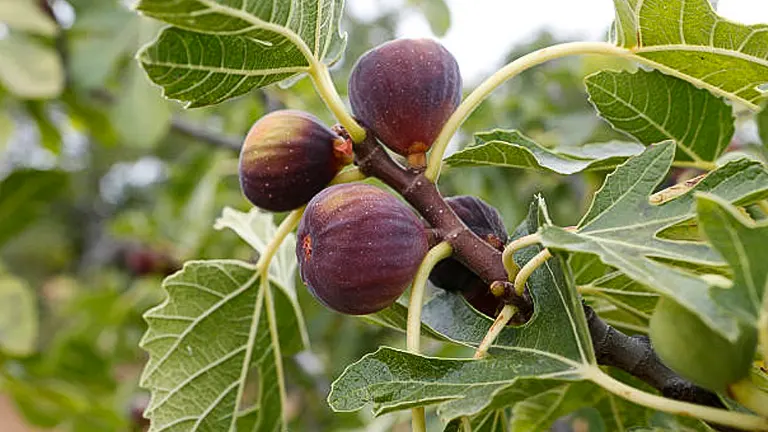
You’ll discover essential tips that ensure your fig trees not only survive but thrive, producing lush foliage and bountiful fruits. Perfect for beginners and seasoned gardeners alike, this guide will help you master the art of fig tree care for impressive results.
Table of Contents
- Overview of Fig Trees
- Choosing the Right Fig Tree
- Planting Your Fig Tree
- Care and Maintenance
- Harvesting and Using Your Figs
- Troubleshooting Common Issues
- Conclusion
- FAQs
Overview of Fig Trees
Botanical and Historical Significance
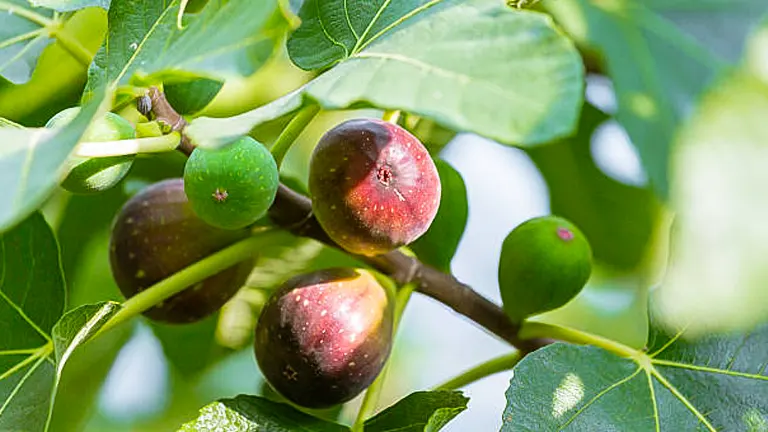
The fig tree (Ficus carica) is a remarkable member of the Moraceae family, adapted to thrive in arid and semi-tropical climates. As a deciduous tree, it sheds its leaves during the colder months, preparing for a period of dormancy. Fig trees are unique in that they bear fruit twice a year: an early summer crop, known as the breba crop, and a later summer to fall crop. What is commonly referred to as the fig fruit is, in fact, an inverted flower called a syconium, which houses the fig’s true flowers inside. This fascinating structure contributes to the fig’s botanical intrigue.
| Attribute | Details |
|---|---|
| Scientific Name | Ficus carica |
| Family | Moraceae |
| Native Regions | Western Asia, Middle East |
| Optimal USDA Zones | 7-11 |
| Growth Habit | Deciduous tree |
| Height at Maturity | 15-30 feet (4.5-9 meters) |
| Spread at Maturity | 15-20 feet (4.5-6 meters) |
| Fruit Type | Syconium (inverted flower) |
| Nutritional Value | High in dietary fiber, vitamin B6, copper, potassium |
| Medicinal Properties | Latex with potential anti-cancer and anti-inflammatory properties |
| First Cultivation Evidence | 9400-9200 BCE in the Jordan Valley |
| Pollination | Often self-pollinating, some varieties require fig wasps (Blastophaga psenes) |
Additional Information
- Growth Cycle: Fig trees follow a distinct growth cycle, entering dormancy in winter, sprouting leaves and flowers in spring, and setting fruit in early summer. A second fruiting often occurs from late summer into fall.
- Reproductive Biology: The fig’s unique reproductive process involves a mutualistic relationship with fig wasps. In some varieties, these tiny wasps pollinate the flowers inside the syconium, ensuring the development of seeds.
- Environmental Adaptability: Fig trees are remarkably adaptable, capable of thriving in various soil types, though they prefer well-drained loamy soils. They are also drought-tolerant once established but produce better yields with consistent moisture.
Cultural Impact
Figs hold a distinguished place in human history, being one of the earliest fruits cultivated, with evidence from archaeological sites dating back to 9400-9200 BCE. They feature prominently in numerous cultures and religions, symbolizing prosperity, peace, and fertility. In ancient Greece, figs were associated with Demeter, the goddess of agriculture. In Roman times, they were revered as sacred and linked to the foundation of Rome itself.
In religious texts, figs are mentioned frequently. For instance, in the Bible, the fig tree is often used as a symbol of peace and prosperity. The fig tree’s mention in various religious contexts highlights its longstanding significance across different civilizations.
Unique Insights and Additional Information
- Pollination Mechanism: One of the most intriguing aspects of fig biology is its pollination mechanism. Many figs are pollinated by specific wasp species in a mutualistic relationship. For example, the common fig (Ficus carica) is pollinated by the Blastophaga psenes wasp. This interaction is vital for the fig’s life cycle and fruit production.
- Nutritional Value: Figs are not only delicious but also nutritionally rich. They are a good source of dietary fiber, vitamins (such as vitamin B6 and K), and minerals like potassium, magnesium, and calcium. Scientific studies suggest that figs may have antioxidant, anti-inflammatory, and anticancer properties.
- Scientific Studies: Recent research has focused on the potential health benefits of figs. A study published in the Journal of Agricultural and Food Chemistry found that figs have high antioxidant activity, which can help combat oxidative stress and inflammation. Another study highlighted the potential of fig extracts in cancer prevention, suggesting that compounds in figs can induce apoptosis (programmed cell death) in cancer cells.
- Climate Adaptability: Fig trees are highly adaptable to different climatic conditions, which is why they can be grown in various parts of the world. However, they are particularly sensitive to frost, which can damage the fruit and leaves. In regions prone to frost, fig trees should be planted in sheltered spots or grown in containers that can be moved indoors during cold weather.
By understanding these scientific, historical, and cultural facets of fig trees, you can appreciate their value beyond just their fruit. Whether you’re an avid gardener or a history enthusiast, the fig tree offers a wealth of knowledge and enjoyment.
Choosing the Right Fig Tree
Types of Fig Trees
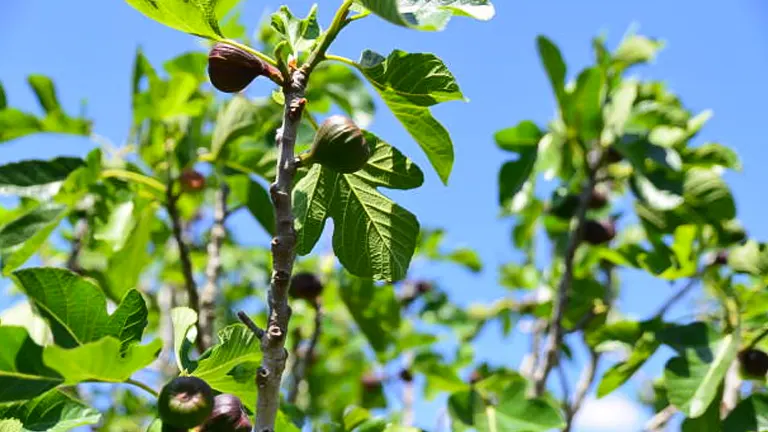
The journey to a flourishing fig garden begins with selecting the right variety. Among the numerous types available, some of the most popular include:
- Brown Turkey: Known for its adaptability, this variety produces large fruits that are mildly sweet, perfect for those who prefer a subtler flavor. It’s also cold-hardy, making it suitable for slightly cooler climates.
- Celeste: Often called the “sugar fig,” it is highly praised for its rich, sweet fruits that also boast excellent pest resistance. The fruits are small to medium in size, with a light purple to bronze skin.
- Black Mission: Famous for its deep purple skin and vibrant red flesh, this type offers a robust flavor that makes it a favorite for fresh eating and preserves. It is highly productive and can yield two crops per year in ideal conditions.
- Kadota: This variety produces yellow-green figs with a honey-like flavor. It is less common but prized for its sweetness and use in drying and canning.
- Adriatic: Known for its light green skin and strawberry-red flesh, this variety is often used in fig bars and cookies due to its high sugar content and rich flavor.
Climate and Soil Requirements
Fig trees flourish in warmer, temperate zones, thriving in USDA zones 7 to 11. They prefer full sunlight, needing at least 8 hours of direct sun per day to fruit properly. While they are adaptable to a range of soil types, figs best perform in well-drained soils that are fertile and rich in organic matter. The ideal soil pH should be between 6.0 and 6.5, slightly acidic to neutral.
When preparing your garden for a fig tree, ensure the planting area is free of weeds and has adequate drainage to prevent waterlogging, which can lead to root diseases. Incorporating compost or aged manure into the soil can improve its fertility and structure, providing a nurturing environment for your tree to establish its roots.
Fig Tree Varieties and Characteristics
| Variety | Flavor Profile | Skin Color | Flesh Color | Climate Adaptability | Common Uses |
|---|---|---|---|---|---|
| Brown Turkey | Mildly sweet | Brownish-purple | Amber | Cold-hardy, adaptable | Fresh eating, preserves |
| Celeste | Rich, very sweet | Light purple | Pink | Warm climates, pest resistant | Fresh eating, drying |
| Black Mission | Robust, rich | Deep purple | Vibrant red | Productive in warm climates | Fresh eating, preserves |
| Kadota | Honey-like, sweet | Yellow-green | Amber | Warm climates, less common | Drying, canning |
| Adriatic | High sugar content | Light green | Strawberry-red | Warm climates | Fig bars, cookies |
Additional Information
- Fig trees can grow 12-24 inches per year under optimal conditions, and a mature tree can produce 20-50 pounds of fruit annually.
- Most common fig varieties are self-pollinating. However, certain types like Smyrna figs require pollination by a specific wasp species (Blastophaga psenes).
- Fig trees have a shallow, spreading root system. It’s important to provide a mulch layer to conserve moisture and suppress weeds.
Scientific Insights
- Photosynthesis Efficiency: Fig trees have a high photosynthetic rate, contributing to their rapid growth and fruiting capabilities. Studies show they can have a photosynthetic efficiency of up to 18 µmol CO₂/m²/s under optimal conditions.
- Nutrient Uptake: Fig trees are efficient in nutrient uptake, particularly nitrogen, phosphorus, and potassium, which are crucial for fruit development.
Planting Your Fig Tree
Timing and Planting Season
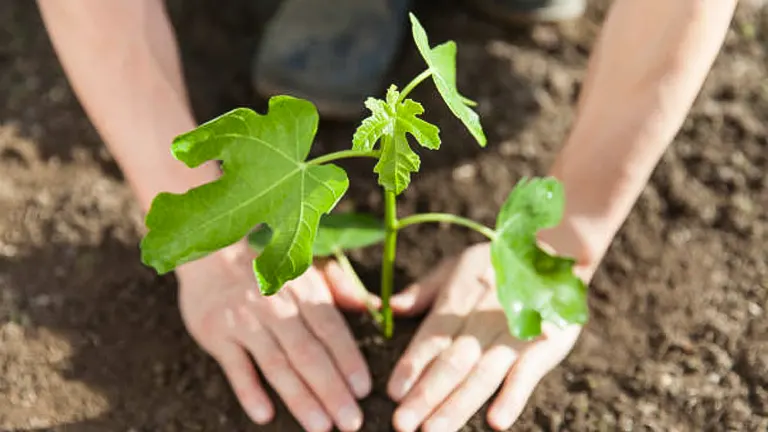
The optimal time to plant fig trees is during the dormant season, from late fall to early spring, when the tree is not actively growing. This period allows the tree to establish its roots in the new location before the growing season begins. In regions with colder winters, it is advisable to plant in early spring to avoid frost damage to the newly planted tree.
Location and Sunlight
Selecting the right location is crucial for the health and productivity of your fig tree. Fig trees require a spot that receives full sunlight for the majority of the day. Aim for a location that gets at least 8 hours of direct sunlight daily, which is essential for the tree’s growth and fruit development. Additionally, consider the mature size of the tree—fig trees can grow up to 15-30 feet high and 15-20 feet wide. Ensure there is ample space for the tree to expand without being obstructed by buildings or other plants.
Planting Process
- Site Preparation: Choose a well-drained spot as fig trees are susceptible to root rot in poorly drained soils. If drainage is a concern, consider planting on a slight slope or in a raised bed. This will help prevent water accumulation around the roots.
- Hole Preparation: Dig a hole that is twice the width and the same depth as the root ball of your fig tree. This allows the roots to spread easily. If the soil is very dense or clay-heavy, enlarge the hole and mix in some compost or aged manure to improve aeration and nutrient content.
- Planting the Tree: Place the tree in the hole so that the top of the root ball is level with the soil surface. Backfill the hole with the soil you removed, amended with organic matter if necessary. Gently tamp down the soil as you backfill to remove air pockets, which can cause root desiccation and instability.
- Watering After Planting: Immediately after planting, water the tree deeply. This helps settle the soil around the roots and ensures that the tree has enough moisture to start adapting to its new environment. Water the tree until the soil is moist but not waterlogged.
- Mulching: Apply a 2-3 inch layer of organic mulch around the base of the tree, extending out to the drip line. Keep the mulch a few inches away from the trunk to prevent moisture buildup that can lead to bark diseases. Mulch helps retain soil moisture, suppress weeds, and maintain a stable soil temperature. Use materials like straw, wood chips, or composted leaves.
Spacing in Medium to High-Density Orchards
Proper spacing is vital in medium to high-density fig orchards to ensure each tree receives adequate sunlight and air circulation. For medium-density planting, space the trees 15-20 feet apart. For high-density planting, reduce the spacing to 10-15 feet. High-density planting requires more intensive pruning and management to prevent overcrowding and to maximize light penetration and air flow, which are essential for fruit production and disease prevention.
Scientific Insights and Analysis
Fig trees have specific requirements for successful growth and fruiting. Here’s a table summarizing key factors:
| Factor | Optimal Conditions | Scientific Insights |
|---|---|---|
| Sunlight | Full sunlight (8+ hours/day) | Photosynthesis rate: up to 18 µmol CO₂/m²/s |
| Soil pH | Slightly acidic to neutral (6.0-6.5) | Soil pH affects nutrient availability and root health |
| Watering | Deep watering, allow soil to dry between waterings | Water stress can reduce fruit yield and quality |
| Nutrient Requirements | Balanced nutrients, high in nitrogen, phosphorus, potassium | Essential for growth, flowering, and fruiting |
| Root System | Shallow, spreading roots | Sensitive to waterlogging, benefits from well-drained soil |
| Temperature Tolerance | Thrives in USDA zones 7-11 | Frost damage can occur below 20°F (-6°C) |
Additional Information
- Growth Rate: Fig trees can grow 12-24 inches per year under optimal conditions.
- Yield: A mature fig tree can produce 20-50 pounds of fruit annually.
- Reproductive Biology: The fig’s unique reproductive process often involves a mutualistic relationship with fig wasps, essential for pollination in some varieties.
Care and Maintenance
Watering
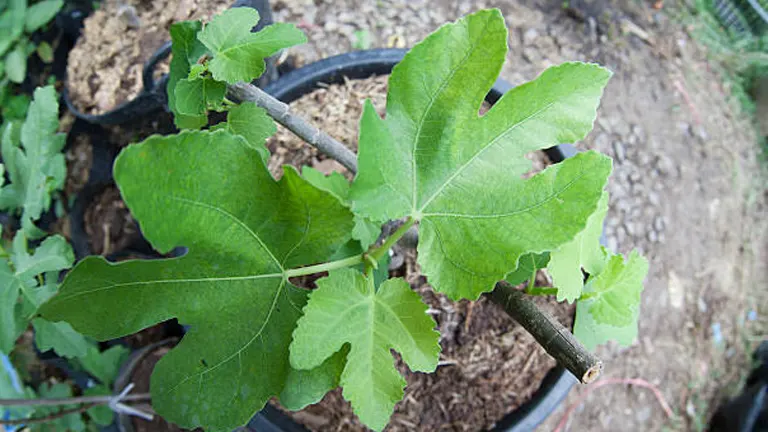
Proper watering is crucial for the health and productivity of fig trees. During the first year after planting, it’s essential to maintain a consistent watering schedule to establish a strong root system. Water young trees deeply once a week, allowing the soil to dry out slightly between waterings. Avoid overwatering, as fig trees are susceptible to root rot if the soil remains too wet. In subsequent years, reduce the frequency to every other week, adjusting based on rainfall and temperature. Mature trees generally require less frequent watering but may need additional hydration during dry spells.
Fertilization
Fig trees benefit from moderate fertilization. In early spring, apply a balanced, slow-release fertilizer to promote vigorous growth and fruit production. Avoid high nitrogen fertilizers, which can lead to excessive leaf growth at the expense of fruit development. Apply the fertilizer according to package directions, spreading it evenly around the drip line of the tree and watering it in thoroughly.
Pruning Techniques
Pruning is essential for maintaining a healthy structure, promoting vigorous growth, and ensuring abundant fruit production. Here are some pruning strategies tailored to fig trees:
- Formative Pruning: In the first few years, focus on shaping the tree to create a strong, open structure. Remove any crossing or inward-growing branches to enhance air circulation and light penetration.
- Maintenance Pruning: Annually, in late winter, prune any dead or diseased wood and thin out overcrowded branches. This helps to rejuvenate the tree and encourages the growth of new fruit-bearing wood.
- Pruning for High-Density Planting: In denser orchards, more aggressive pruning may be required to manage the size and shape of the trees. Keep the trees shorter to facilitate easier harvesting and ensure each tree receives sufficient light.
Pest and Disease Management
Fig trees are relatively hardy but can be affected by certain pests and diseases. Common issues include:
- Fig Rust: This fungal disease causes orange-brown spots on the leaves, which can lead to premature leaf drop. Control fig rust by removing affected leaves and applying fungicide if necessary.
- Fig Mosaic Virus: Symptoms include mottled and distorted leaves. While there is no treatment for this virus, maintaining good tree health can help minimize its impact.
- Pests: Birds, beetles, and mites are common pests for fig trees. Netting can protect fruits from birds, while horticultural oils or insecticidal soaps can be used to manage beetles and mites.
Harvesting and Using Your Figs
Signs of Ripeness

Fig trees generally bear fruit from the third year onward, with some varieties producing two crops a year—the early breba crop and the main crop. Identifying ripe figs is crucial for optimal taste and preservation. Ripe figs change color depending on the variety, from green to dark brown or purple, and droop slightly on their stem, indicating they are ready to be picked. The fruit should be soft to the touch, and a drop of nectar often appears at the bottom. These signs suggest the figs are at their peak sweetness and flavor.
Harvesting Techniques
To harvest figs, use clean, sharp scissors or pruners. Cut the stem just above the fruit, being careful not to squeeze or bruise the fruit as it’s quite delicate. Harvesting in the morning, especially after the dew has lifted, is ideal as the fruit is cool and firm, which reduces bruising during handling.
Storage and Usage
Fresh figs are perishable and should be consumed within a few days of harvesting. Store them in a cool, dry place, and for longer preservation, keep them in the refrigerator where they can last for about a week. Figs are versatile in the kitchen, suitable for both sweet and savory dishes. They can be used fresh in salads, baked into desserts, or preserved as jams or compotes. Drying figs is also a popular method for long-term storage, enhancing their sweetness and allowing them to be enjoyed year-round.
Troubleshooting Common Issues
Leaf Drop
One common issue with fig trees is leaf drop, which can be caused by various factors including water stress—both underwatering and overwatering—or sudden temperature changes. Ensure consistent watering, adjust practices according to the season, and provide protection from cold drafts in cooler climates.
Unfruitfulness
If your fig tree is not producing fruit, it could be due to inadequate sunlight, improper pruning, or a lack of pollinators for certain varieties. Ensure that your tree is situated in a sunny spot and follow proper pruning techniques. Also, consider the variety’s pollination needs; some fig varieties require a specific wasp for pollination.
Weather-related Concerns
Extreme weather, be it frost, high heat, or severe cold, can impact fig trees significantly. Protect young trees from frost by wrapping them or using a frost cloth. During hot spells, mulching helps retain soil moisture and keeps the roots cool. In regions with severe winter conditions, planting fig trees in containers may be advisable so they can be moved indoors or to a sheltered location.
Related Post
- How to Fertilize Bougainvillea: A Complete Guide for Stunning Blooms
- How to Fertilize Apple Trees: Essential Tips for a Bountiful Harvest
- How to Fertilize Lemon Trees: Secrets for Thriving Citrus
- How to Fertilize Avocado Tree: A Step-by-Step Guide for Lush Growth
Conclusion
Growing fig trees can be a deeply rewarding experience. These stately trees not only provide your garden with a striking visual appeal, but they also offer the sweet reward of fresh figs right from the branch. By following the guidelines outlined in this guide—from selecting the right variety and proper planting to diligent care and timely harvesting—you will be well-equipped to nurture your fig trees. Remember, the key to successful fig tree cultivation lies in understanding and catering to their specific needs in terms of soil, water, and sunlight.
Whether you are a novice gardener or an experienced horticulturist, the journey of growing fig trees offers a unique opportunity to engage directly with the cycle of nature. As you watch your fig trees grow and flourish, you’ll gain not only luscious fruits but also an enhanced sense of connection to your environment.
FAQs
- What is the best way to protect young fig trees during their first winter?
Wrap young fig trees with burlap or use a frost cloth to cover them. Additionally, mulching around the base with straw or shredded bark can help insulate the roots against severe cold. - How often should I prune my fig tree and what is the best season for it?
Prune your fig tree annually during the dormant season, typically in late winter. This helps avoid sap loss and stress on the tree, promoting healthy growth and fruiting in the upcoming season. - Can fig trees be grown in containers and what should I consider when doing so?
Yes, fig trees can thrive in containers, especially in climates with harsh winters. Choose a large pot with adequate drainage holes and use a well-draining potting mix. Container-grown figs need more frequent watering and should be repotted every few years to refresh the soil. - What are the signs that my fig tree needs more water?
Signs include wilting leaves, dry and brittle branches, and fruit that shrivels or drops prematurely. During hot, dry periods, increase watering but always allow the soil to dry out slightly between waterings. - Is it necessary to fertilize my fig tree? If so, what type of fertilizer should I use?
Fertilization is beneficial for fig trees, especially for enhancing growth and fruit production. Use a balanced, slow-release fertilizer in early spring as new growth appears. Avoid high nitrogen fertilizers, as they can promote leaf growth at the expense of fruit. - How can I tell if my fig tree is getting too much sun?
While fig trees love sunlight, excessive exposure can lead to sunscald, where leaves and fruit get sunburnt. Signs include bleached or discolored patches on leaves and fruit. Provide some afternoon shade in extremely hot climates or during heat waves. - What should I do if my fig tree isn’t producing any fruit?
Ensure that your tree is getting enough sun and is not overly shaded. Also, check if your variety requires a pollinator. Some fig varieties are self-fertile, while others need a specific type of fig wasp to pollinate and produce fruit. Adjust pruning practices as over-pruning can also reduce fruit production. - Can fig trees recover from root rot, and how can I prevent it?
Recovery from root rot is challenging but possible if caught early. Improve drainage around your tree, reduce watering, and remove any visibly affected roots and surrounding soil. Prevent root rot by ensuring your planting site is well-drained and never overwatering your fig tree.
With these expert tips in hand, you’re ready to cultivate your own fig trees successfully. Remember, patience and consistent care are key to lush growth and a bountiful harvest. Happy gardening!
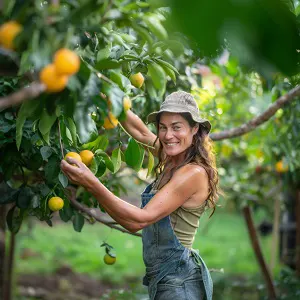
Emma Hudson
Forestry AuthorEmma's experience in farming shapes her detailed guides on gardening and farming tools, providing practical, actionable advice grounded in real-world experience. Her work targets both newcomers and experienced farmers, aiming to enhance their practices with a mix of traditional wisdom and modern techniques. By making complex agricultural concepts accessible, Emma's guides serve as valuable tools for those navigating the challenges of contemporary farming, offering strategies for sustainable success.








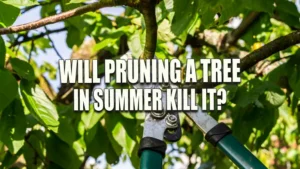




Leave your comment